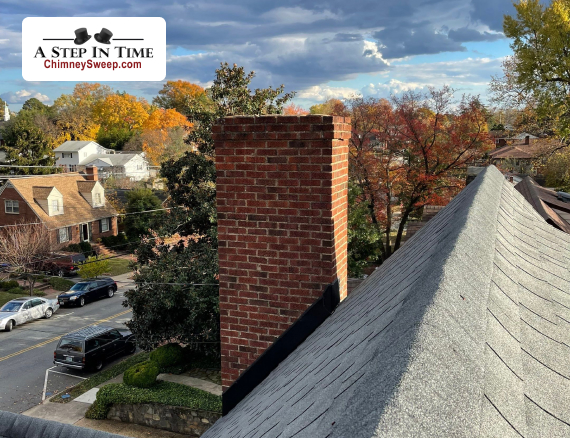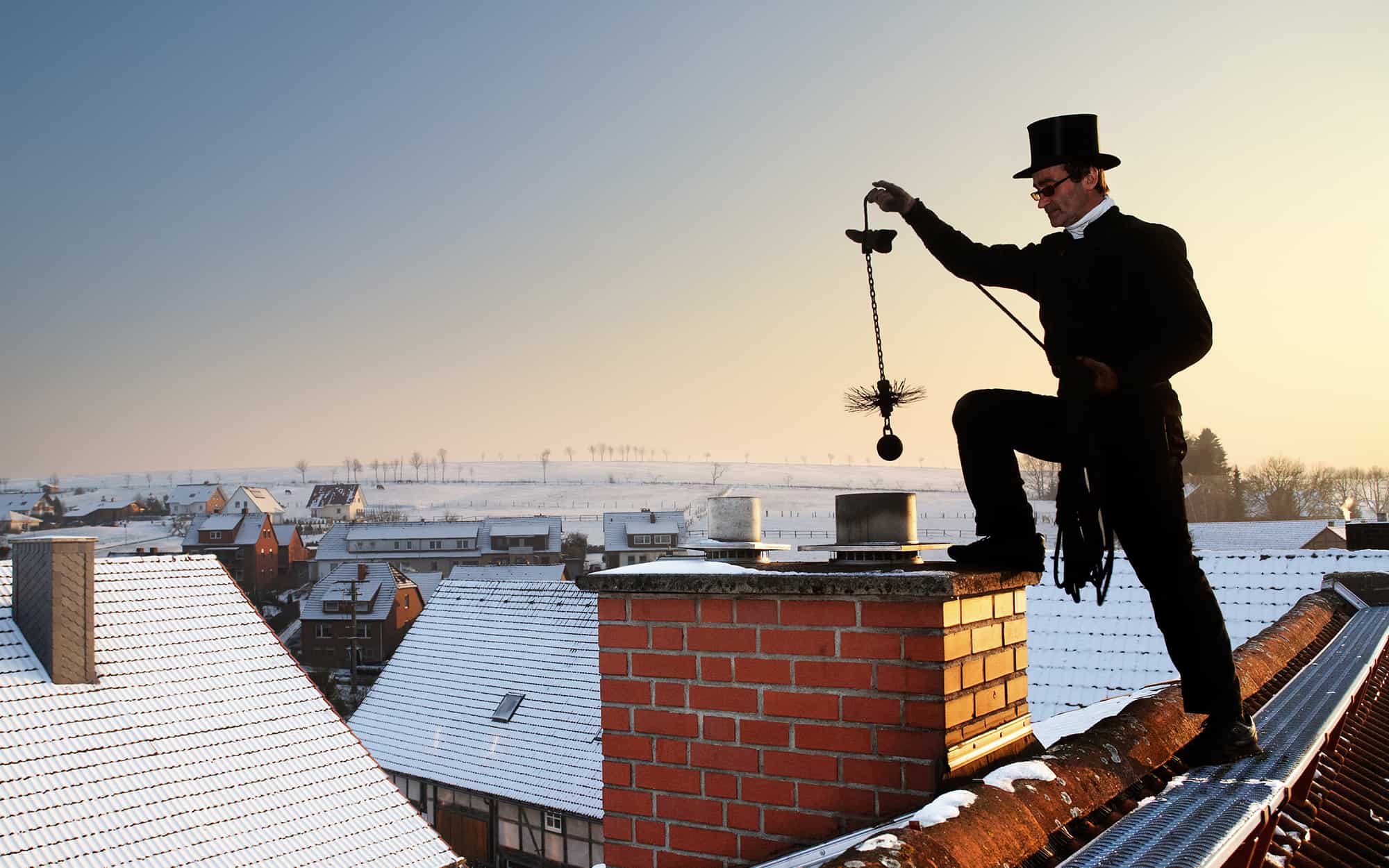Experience the Distinction: Chimney Clean San Jose for a Cleaner, Safer Home
Experience the Distinction: Chimney Clean San Jose for a Cleaner, Safer Home
Blog Article
Smokeshaft Cleansing: A Step-by-Step Guide to Maintaining a Healthy Fireplace
Keeping a healthy and balanced fireplace is vital for the safety and effectiveness of your home. Normal chimney cleaning is a crucial component of this upkeep routine. In this step-by-step overview, we will supply you with thorough guidelines on how to correctly clean your smokeshaft, ensuring that it works efficiently and minimizes the danger of fire threats. By following these standards, you will discover exactly how to gather the required tools, carry out a visual evaluation, clear debris and build-up, move the chimney, and complete the final actions for recurring upkeep. With an expert technique and interest to detail, you can confidently deal with your fire place and enjoy its warmth and comfort for years ahead.
Collecting the Necessary Tools
To start the procedure of smokeshaft cleansing, the very first action is to collect all the necessary devices. Having the right devices available makes sure a effective and secure cleansing process. The vital tools for smokeshaft cleaning consist of a smokeshaft brush, a ladder, ground cloth or plastic sheets, a flashlight, handwear covers, and a dirt mask.
The chimney brush is the primary tool made use of to remove soot and creosote buildup from the flue. It is crucial to select a brush that matches the size and shape of your smokeshaft. In addition, a durable ladder is necessary to access the chimney securely. See to it the ladder is steady and placed on a flat surface.
Drop fabrics or plastic sheets are vital for protecting the bordering location from dust and debris. They help contain the mess and make cleaning much easier. A flashlight is crucial for checking the chimney's interior for any kind of indicators of damages or obstructions. Handwear covers are required to shield your hands from residue and other unsafe materials, while a dirt mask assists avoid the breathing of particles.
Carrying Out a Visual Inspection

Making use of a flashlight, thoroughly take a look at the interior wall surfaces of the chimney for any type of indications of damage, such as splits, loosened bricks, or mortar degeneration. These concerns can compromise the chimney's structural integrity and pose a severe security danger. In addition, look for any kind of indicators of water damage, such as discoloration or efflorescence, as this can suggest a dripping smokeshaft cap or blinking.
Following, evaluate the chimney flue for any type of blockages. Try to find the existence of nesting materials, leaves, or debris that may have accumulated in time (Chimney Clean San Jose). These obstructions can restrict airflow, increase the risk of carbon monoxide gas buildup, and prevent the smokeshaft's capacity to properly air vent smoke
Throughout the visual evaluation, pay very close attention to the chimney crown, which is the top surface that protects the smokeshaft from moisture. Search for fractures or missing items in the crown, as these can enable water to go into the chimney and cause significant damages.
Cleaning Debris and Accumulation
After finishing the visual inspection, the following action in chimney cleansing includes clearing debris and build-up to make certain the proper functioning of the fireplace. In time, particles such as leaves, twigs, and animal nests can build Go Here up in the smokeshaft, obstructing the flow of air and creating prospective fire threats. In addition, the accumulation of creosote, a tar-like material, is a common issue in smokeshafts. Creosote is created when timber or nonrenewable fuel sources are melted, and otherwise removed on a regular basis, it can result in smokeshaft fires.
A chimney brush, particularly made for this function, is made use of to remove loose particles and creosote from the smokeshaft walls. It is necessary to pick a brush that matches the dimension of your chimney to guarantee reliable cleaning.
To start, put the brush into the chimney and relocate it up and down, rubbing the wall surfaces to dislodge any type of particles or creosote. Once the cleaning is full, utilize a vacuum cleaner or a smokeshaft brush expansion to eliminate the dislodged debris from the fire place.

Brushing Up the Smokeshaft
The sweeping of the smokeshaft is a crucial action in maintaining a healthy and balanced fire place. With time, soot, creosote, and other debris can gather in the smokeshaft, obstructing the flow of air and possibly causing a harmful build-up of combustible products. Regular chimney sweeper not just guarantees proper ventilation however additionally protects against the threat of smokeshaft fires.
When it involves smokeshaft sweeping, it is very recommended to hire a professional chimney move. These specialists have the expertise and devices necessary to safely and effectively eliminate the collected debris from your chimney. They will generally start by covering the fire place to stop any kind of residue or particles from entering your home. Utilizing specific brushes and vacuum cleaner equipment, they will certainly then cleanse the chimney from top to base, making visite site sure that all the buildup is extensively eliminated.
It is vital to keep in mind that the frequency of chimney sweeping depends on a number of aspects, such as the kind of gas used, the quantity of usage, and the sort of chimney. As a general guideline, it is advised to have your smokeshaft swept and evaluated at least yearly.
Final Steps and Maintenance
After finishing the smokeshaft sweeping process, the very first step in the last upkeep is to inspect the chimney cap and spark arrestor. These elements protect against debris, animals, and rainwater from going into the smokeshaft.

Examine the within of the fire place for any type of indicators of wear and tear, such as fractures, loosened blocks, or damaged mortar. These problems can impact the architectural honesty and safety of the fireplace. Seek advice from an expert smokeshaft move or mason to address them immediately. if any type of issues are identified.
Ultimately, take into consideration setting up carbon monoxide gas detectors near the fire place and throughout your home. These devices can detect the existence of this hazardous gas, providing an early warning system in case of a smokeshaft malfunction. On a regular basis inspect and replace the batteries in these detectors to ensure their effectiveness.
Conclusion
In conclusion, following a detailed overview for smokeshaft cleansing is important in preserving a healthy fire place. By gathering the necessary devices, performing an aesthetic examination, clearing debris and accumulation, and brushing up the chimney, homeowners can make sure the safety and effectiveness of their fireplace.
The vital devices for chimney cleaning consist of a chimney brush, a ladder, drop towels or plastic sheets, a flashlight, gloves, and a dirt mask.
A smokeshaft brush, particularly developed find for this function, is used to remove loosened particles and creosote from the smokeshaft wall surfaces. Regular chimney sweeping not only makes sure proper air flow but likewise avoids the threat of chimney fires.
When it comes to smokeshaft sweeping, it is extremely recommended to work with a specialist chimney move. After finishing the chimney sweeping process, the first action in the last maintenance is to evaluate the chimney cap and stimulate arrestor.
Report this page